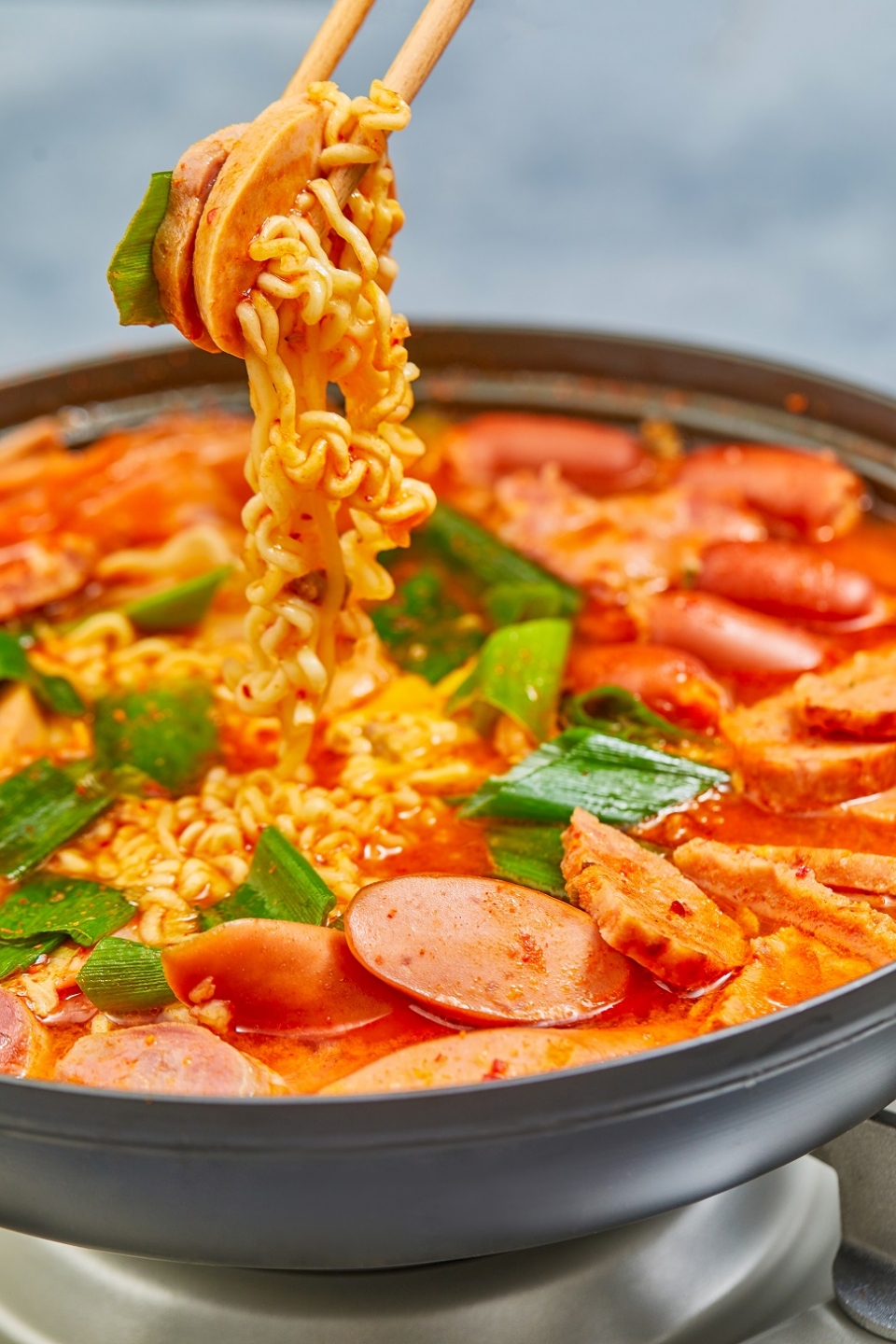
People have long exchanged ingredients and cooking methods with neighboring countries and even far off continents. New ingredients and methods have been used to add exotic flavors to indigenous food and create fusion cuisine or entirely new dishes.
Koreans have mastered such recreations and adaptations with some of its reinterpreted imported dishes gaining worldwide acclaim as K-food, even in the countries of origin. Here are some of them.
Budaejjigae, product of painful history
The name stems from a rather painful period of Korean history – budae means military base, and jjigae is stew, the type Koreans eat almost every day in various forms with rice.
During and after the 1950-53 Korean War, people in the devastated country did not have much to eat. Conversely, the U.S. soldiers stationed in South Korea to help the country fight North Korea after its invasion had steady supplies of military rations which also became an important food source for civilians.
People living near the American bases obtained surplus canned ham and sausage from soldiers. Then they added the foreign food rations to traditional stew. Cut-up canned ham and sausage were boiled with such Korean ingredients as kimchi, tofu and traditional condiments like red pepper powder. Later, people began to add ramyeon noodles to the stew, which have become an essential ingredient nowadays.
Today, budaejjigae is a popular Korean dish and has been introduced abroad.
In other countries, especially in the West, many people do not have a positive image of canned ham and processed sausage, so the idea of adding them to a stew is surprising. Sometimes, canned baked beans and slices of American cheese are also added, depending on the restaurant. But such unique and unusual combinations usually always leave the uninitiated surprised by the rich flavor created.

Hot dogs or corn dogs
What Americans call a “corn dog” is widely called a “hot dog” in Korean. What is known as a “hot dog” or “frankfurter” in the West as well as the many varieties of minced meat sold in casings are all simply called “sausage” in Korean.
The “corn dog” is believed to have originated in the United States in the 1940s. It remains unclear exactly when it came to Korea, but photos in newspapers and other records from the 1970s show people eating what are identified as “hot dogs” from street vendors.
Korean hot dogs are quite unique because they usually come not only with ketchup and mustard, but also with sugar and sometimes even mayonnaise. The fried batter is rolled over sugar and then other sauces are added.
Also, Korean hog dogs have both inside and outside variations. Typically, you can choose among sausage and mozzarella cheese, or banban “half and half” with smaller amounts of both ingredients on the inside. On the outside, you can choose between original batter or one covered with diced potatoes.
These hot dogs are available at street stalls, and there are even franchise restaurants with a wide variety of them on their menus.

Fried chicken smothered in different sauces
The most common form of battered, deep-fried chicken is said to have originated in the southeastern United States when ingredients and cooking styles from Scotland and Africa were combined.
Inspired by U.S. franchises like KFC, Korean cooks developed their own fried chicken recipes. These days, their varieties of fried chicken are often said to be crispier outside and juicier inside than those sold in other countries. But what distinguishes them the most is the multitude of sauces.
The first sauce to be introduced was the sweet and spicy yangnyeom (literally “seasoning”). After decades with the original and yangnyeom-based recipes dominating the local fried chicken market, a far greater variety of sauces started to be offered around the 2000s. These include soy sauce, honey, black pepper, garlic, cheese (powdered or melted), onion, mayonnaise, chili, basil and jjajang (black bean sauce), to name a few.
Fried chicken in Korea is often garnished with tteok (rice cake), corn, spring onions, garlic chips or jalapenos. You can also choose boneless chicken.
If you want to try more than one type of fried chicken at a time, there’s no need to worry; many fried chicken restaurants and delivery services offer banban (half-half) orders or even a variety pack with up to five different flavors.
Several chicken franchise brands have advanced to other countries, including the United States, gaining popularity from locals as “Korean fried chicken.”


